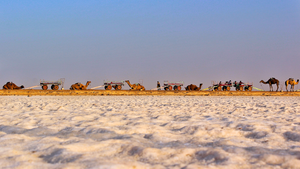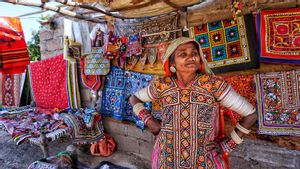On the outskirts of Bhuj in Gujarat, there is Madhapur, Asia's richest village from 1993. This title deserves a major rethink of traditional notions about rural Indian living. Unlike our usual picture of village life-muddy roads, small houses and rudimentary farming-the Madhapur population have put up something absolutely incredible. With over 7,000 crore rupees in fixed deposits, home to about 32 thousand people Madhapur stands as an epitome of wealth and progress in modern India - and also just what part Non-Resident Indians (NRIs) can play in its success.
Madhapur, Gujarat is much more than just another village in India. It's an unique example of how international links and local sense of pride coexist to make one Asian region with some of the richest inhabitants anywhere around today. Because of its strong financial sector, high living standards and sustained growth, Madhapur has become India's richest village.
The secret behind Madhapur’s wealth

Madhapur, India's richest village is an excellent example of a village, gaining outstanding financial results due to its large NRI community, mainly Patel community. Approximately, 65% of the families of this richest village have relatives abroad mainly in countries like Kenya, Uganda, the UK, the USA, and Canada. Many of these people have established themselves as professionals or businessmen in the area of construction and in many other fields, especially in Africa.
These global residents of Asia's richest village regularly send some portion of savings as remittances back to Madhapur or their family members, which are then deposited into local banks and post offices. Over the years, these consistent inflows have contributed to Madhapur's impressive savings and investment capacity, giving it the title of Asia’s richest village that gives competition even to some urban areas.
Banking powerhouse

It seems unbelievable, but there are as many as 17 banks in Madhapur, Gujarat which are rarely seen at any village. Such large financial institutions as HDFC Bank, SBI, PNB, Axis Bank, and ICICI Bank have set up their branches in the village, with other banks planning to follow their example. Thus, the existence of banks is one of the ways in which the savings of the residents of the richest village are managed, among the major sources of savings.
Infrastructural growth and development

The prosperity created by the influx of savings from NRIs has resulted in successful efforts aimed at ensuring state-of-the-art infrastructure and facilities. In contrast to the problem of other villages in India, Madhapur has very large and beautiful houses, schools, colleges, health centres, and well-laid-out roads. In addition, the local population made significant efforts for the well-being of people by building major facilities such as dams, lakes, and temples.
Global connections and local roots
What distinguishes Madhapur from other villages is that a significant part of the population of its residents in its village is in contact with their roots. Despite leading a completely different life than the people who live in their homeland, many families make sure that the capital they receive in the new place will serve their hometown. One such example is the Madhapur Village Association in London, an active participant in developing the destination and even supporting the community members in maintaining friendly relations with their village.
When visiting Madhapur, Asia’s richest village, there are several nearby places that offer both cultural and historical significance:
Bhuj

Bhuj is a historic city with a rich past about 15 km from Asia's richest village, Madhapur. Aina Mahal, or the ‘Palace of Mirrors’, is one of the best-known sites to visit in this southwestern city of India. The 18th-century palace was built by Rao Lakhpatji throughout the city’s busy and significant market. The palace is popular for its intricate mirror designs, Venetian architecture, and fine artefacts. The Prag Mahal is also situated in this place: the 19th-century Italian-Gothic palace, which looks nothing like the other traditional areas of the city. Apart from the palaces, you can also explore the Hamirsar Lake, which is a small artificial water body where locals come to relax. The thriving local markets, particularly those of Kutch handicrafts and textiles, provide a vibrant sense of the area’s classic arts. It may offer an excellent opportunity to explore the city’s artistic elegance.
Kutch Museum

The Kutch Museum, situated in Bhuj, is one of the oldest in Gujarat. It was established by Maharao Khengarji III in 1877, and now it offers its visitors an in-depth look at the region’s cultural history. The museum boasts a wide array of Kshatrapa inscriptions as well as a number of textiles, arms, musical instruments, and other tribal artefacts such as the ones belonging to the Rabari and Ahir communities. Its main attraction, however, is the displays related to the regional handicrafts of Kutch, which include various forms of delicate and colourful embroidery, beadwork, and hand-made cloth. An interesting collection of coins, including currency formerly used by the rulers of Kutch, an ancient find from the sites of the Harappan civilization. Thus, the museum provides an opportunity to learn about the history of Kutch and get to know a variety of today’s cultural traditions present in the region.


_1727082901283_thumb_1200.jpeg?w=3840&q=75)

